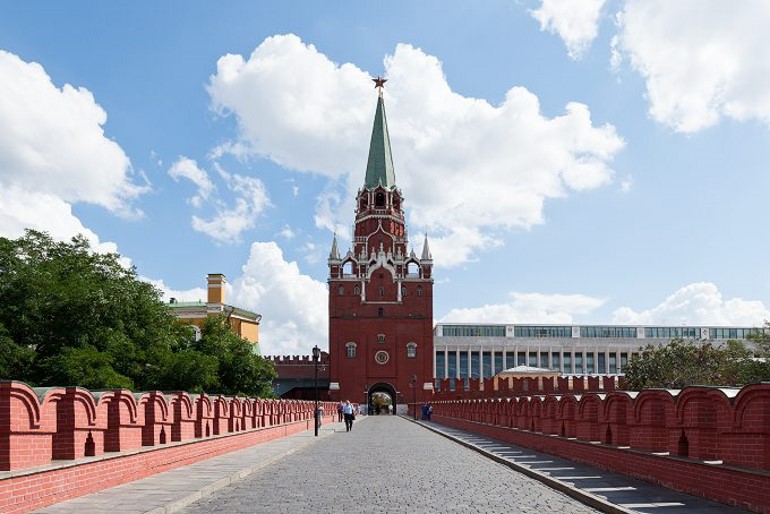
Five hundred and forty years ago, right on the eve of the Great Day – so they called Easter in 1475, a distinguished guest from Italy had entered through the gate of the Moscow fortress, which, one should mention, back then looked nothing like today’s Kremlin. The chronicles have it this way: “In the summer 6983 (1475) on the Great Day, Semyon Tolbuzin, the Grand Duke’s envoy, came back from Rome and brought along a master of walls, who erects churches and chambers, by the name of Aristotele”.
According to the same chronicler, the guest was accompanied by son Andrei and pal Petrusha. He was received quite solemnly, as he was well-known – though not in person, but by the word of mouth – to the First Lady of Muscovy at the time, Grand Duke Ivan’s spouse Sophia Paleolog.
The guest’s name was Aristotele Fioravanti. He was sixty, which back then meant ancient! He came from his native Bologna, or Fat Bologna as they have it in Italy. Some historians throw doubt on his name, supposing that the son born of the Bologna architect 600 years ago went by the name of Rodolfo, and received the nickname of Aristotele honoris causa – as just deserts.
And deserved he did, and did so well: Fioravanti on many occasions before had shown his great engineering and architectural talents. He had moved one of the towers in Bologna to a new place; he had straightened the riverbed of the Reno and the belfry in Cento; he had built an aqueduct there; he had actively participated in the construction of the canals of Parma and Cremona; he had built fortresses for Hungarian King Matthias Corvinus; he had designed the still standing Palazzo del Podesta in Bologna...
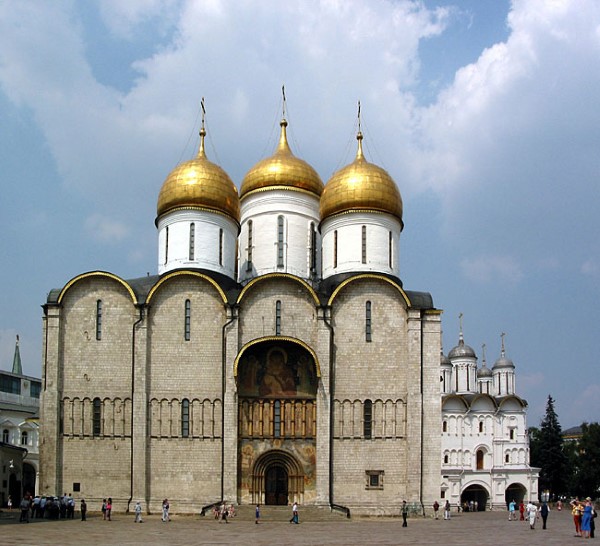
How was he less than antique genius Aristotle? Also, in the quattrocento (15th century), the Golden Age of Renaissance, everything antique was in hip. Just for the reference: Michelangelo Buonarroti was born during Fioravanti’s journey to Moscow, and Leonardo da Vinci in the mid-seventies just finished his Bennois Madonna, so well-known to the Hermitage visitor.
And yet, Fioravanti did not travel to the far, mysterious and cold Muscovy to entertain himself. In all ages – and Renaissance was no exception – extraordinarily gifted people were considered wizards and sorcerers at best... Fioravanti, for instance, had many times been accused of forgery. Although all these accusations had proved inconsistent by documents, and the court had acquitted the architect, the word of mouth took its toll... It was factually the word of mouth that the Bolognese celebrity was now fleeing to Moscow!
The Battering Ram
In Moscow, they had their plans for the new Aristotle. Formally, he had been contracted to build the chief edifice, the main temple of the unified Russian state gaining force – the new Dormition Cathedral in Moscow. And it had to be built along the template of its Vladimir-based predecessor.
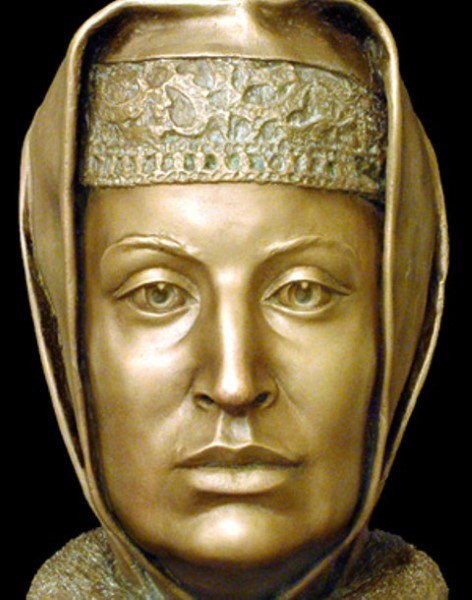
As usual, they first tried to get their own feet wet in this. But the pretty much complete building by architects Krivtsov and Myshkin, who had won the bid quoting the lowest price (a striking similarity of practice!) collapsed in May 1474. And the thing was probably not just the poor lime plaster the masters from Pskov pointed to – those same masters quite notably later on turned down the very same contract. Some assume an echo of a seismic disaster found its way to Moscow, like it was in March 1977. “Coward”, they used to say.
In a word, the tree of ancient Russian architecture blossoming in the past had gone wild over the centuries of Mongol yoke and now needed new juice. It needed the new technologies the Italian master possessed.
However, introducing new technologies did not go very simply. It became clear that in Moscow they had no idea of the things obvious to the builders of Europe – for example, the hoist. Or that they used wood instead of metal in the joints. Or – contrary to the saying ‘breaking is no building’ – they did not really know how to remove collapsed walls.
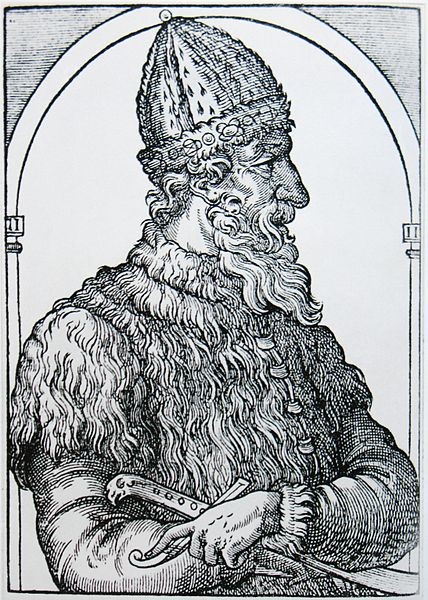
Fioravanti was the first to use the battering ram for that – a metal-coated log swinging between three pillars. It resulted in a perplexed chronicle entry: “What they have been building in three years they have torn down in one week.” There were no good bricks – the Italian insisted on building a special plant out by the Adronnikov Monastery.
Fioravanti was not just skilled – he was an architect mindful of local traditions. To learn the template, he personally went to Vladimir.
Fioravanti’s Dormition Cathedral was complete in less than five years. The details of the construction projects are well-known, and the main temple of Russia has changed but a little over these five odd centuries – except it has grown a meter deep into the ground. “The church is amazing in grandeur and height, light, acoustics and capacity – no other in Russ can compare, but for the one in Vladimir; Aristotele is the master who built it”, praised the grateful chronicler the Italian’s work.
But the Grand Duke captured him…
But the Dormition Cathedral was merely the tip of the Moscow iceberg. Inviting a master so famous for just one temple would not have been rational. The fact was, the whitewashed Kremlin that stood until the late 15th century was that much run down. Then again, the strength of the fortress of Dmitry of the Don was good enough for Muscovy – not for the Unified Russian State.
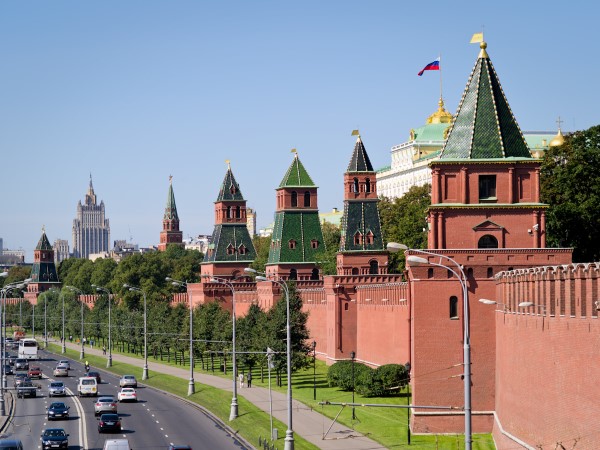
Naturally, Fioravanti had neither time, nor capabilities to build a new humongous citadel alone. And he is known to have asked Ivan III to let him go home several times. But it is quite possible that the architect was the author not only of the Kremlin’s master plan, but also of its secret part – the hidden catacombs. This was why Ivan III was in no rush to let him go.
Eventually, the very name Aristotele Fioravanti disappears from the chronicles. Why? Once again, those days, people of his age were considered extremely old. That, however, did not hamper his command of Muscovite artillery in the campaign against Novgorod, while the Dormition Cathedral was being built. But he still was homesick. And so once he decided to run. After another Italian, a doctor who failed to cure a sick Tatar was tortured and executed. Fioravanti, “afraid of the same destiny, came asking the Grand Duke to let him go home. But the Grand Duke captured him, stripped of property and locked in the Antonov Courtyard...”
However, the Grand Duke still had a need for the stubborn old man – in 1485, the Italian yet again is in command of artillery in the campaign against Tver’. Following that, there is no trace of him. But Master Aristotele did his truly great job. And it is not about one Dormition Cathedral of the Moscow Kremlin, as grandiose as it is.
Fioravanti treaded the path into the semi-mythical Muscovy of the time for other Italians – Marco Ruffo, both Aloisios, Pietro Antonio Solari.
And then both capitals followed to host partly Russified Domenico Trezzini, Antonio Rinaldi, Bartolomeo Rastrelli, Carlo Rossi, Giacomo Quarenghi. Or the less known, but visually influential in the provincial image of Russia – take Shuya or Myshkin – Guadencio Maricelli and Johannes Manfrini. But the pioneer of this Italian Russia remains Aristotele Fioravanti.
Georgy Osipov












